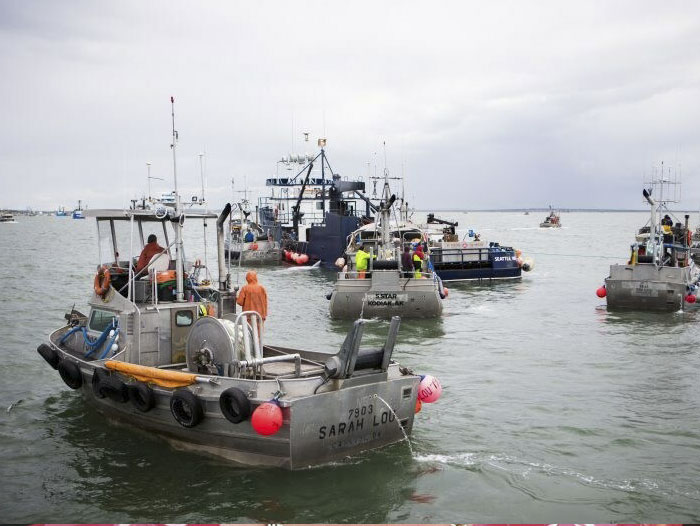Bristol Bay Sees Strong Wild Sockeye Harvest to Follow Up Record-Breaking Year
August 1, 2023 | 3 min to read

BRISTOL BAY, Alaska — The cumulative wild sockeye salmon harvest through the end of July in Bristol Bay, Alaska, currently sits at 38 million fish, surpassing the forecast of 37 million fish. As anticipated, this season’s strong returns make 2023 one of the top five harvest seasons of the past 20 years – quite a follow-up to last year’s all-time record-breaking harvest. Bristol Bay is known as “America’s Wild Sockeye Source,” and is home to the largest wild salmon run on the planet, producing half the world’s supply of wild sockeye.
“The strong harvests out of Bristol Bay in recent years are a testament to the responsible fisheries management of Alaska and the Bristol Bay fishing industry including fishermen, biologists, local community and seafood processors, and speak to the health and thriving future of the wild sockeye in the region,” says Bristol Bay Regional Seafood Development Association (BBRSDA) Marketing Director Lilani Dunn. This year’s salmon fishery will continue into August, with the final harvest numbers certain to inch up a bit higher.
The strong harvest means that shoppers will continue to find a wealth of the delicious, distinctive ruby-red fish throughout restaurants and grocery stores — more than 8,000 nationwide — in the seafood case, freezer, and in shelf-stable forms like canned/pouched for the year ahead. While fresh wild sockeye is available during the summer harvest season, many Bristol Bay fishermen freeze their catch right as it leaves the water, locking in nutrients, reducing food waste and ensuring the highest quality final product reaches consumers’ plates year-round.
“It takes thousands of dedicated people laboring through unfathomably long workdays, unpredictable weather, sore muscles, blistered hands, mechanical problems and more to make a harvest like this happen, year after year,” says Andy Wink, Executive Director of BBRSDA. “We’re proud to be able to provide delicious wild sockeye salmon that is not only rich in nutrients, but is also guaranteed to be sustainably caught and one of the most environmentally friendly protein sources on the planet.”
In addition to being an excellent source of omega-3 fatty acids (DHA and EPA) and boasting the highest vitamin D content of any salmon species, wild sockeye salmon has one of the lowest carbon footprints, not only compared to land-based animal proteins, but among seafood species as well. Wild sockeye has one of the best ratios of nutrition density to greenhouse gas emissions, with lower overall greenhouse gas emissions than Atlantic (farmed) salmon.1
Salmon is the most-consumed fish species in the United States, and is increasingly a primary component of trending recipes via social media, with more than 168 million views for the term on TikTok. The firm texture of sockeye makes it perfect for almost all preparation techniques, including grilling, broiling, sautéing, roasting, poaching, steaming, and smoking. As consumers continue to seek out easy, healthy and sustainable food choices, wild sockeye salmon fits the bill. Thanks to the hard work of the Bristol Bay fishing industry and harvests like this one, shoppers will continue to have wild sockeye available for years to come.
For recipes, cooking tips and more visit www.bristolbaysockeye.org.
About Bristol Bay Regional Seafood Development Association:
The Bristol Bay Regional Seafood Development Association is a fishermen-funded group with the mission to increase the value of the Bristol Bay fishery through education, quality outreach, and marketing.
